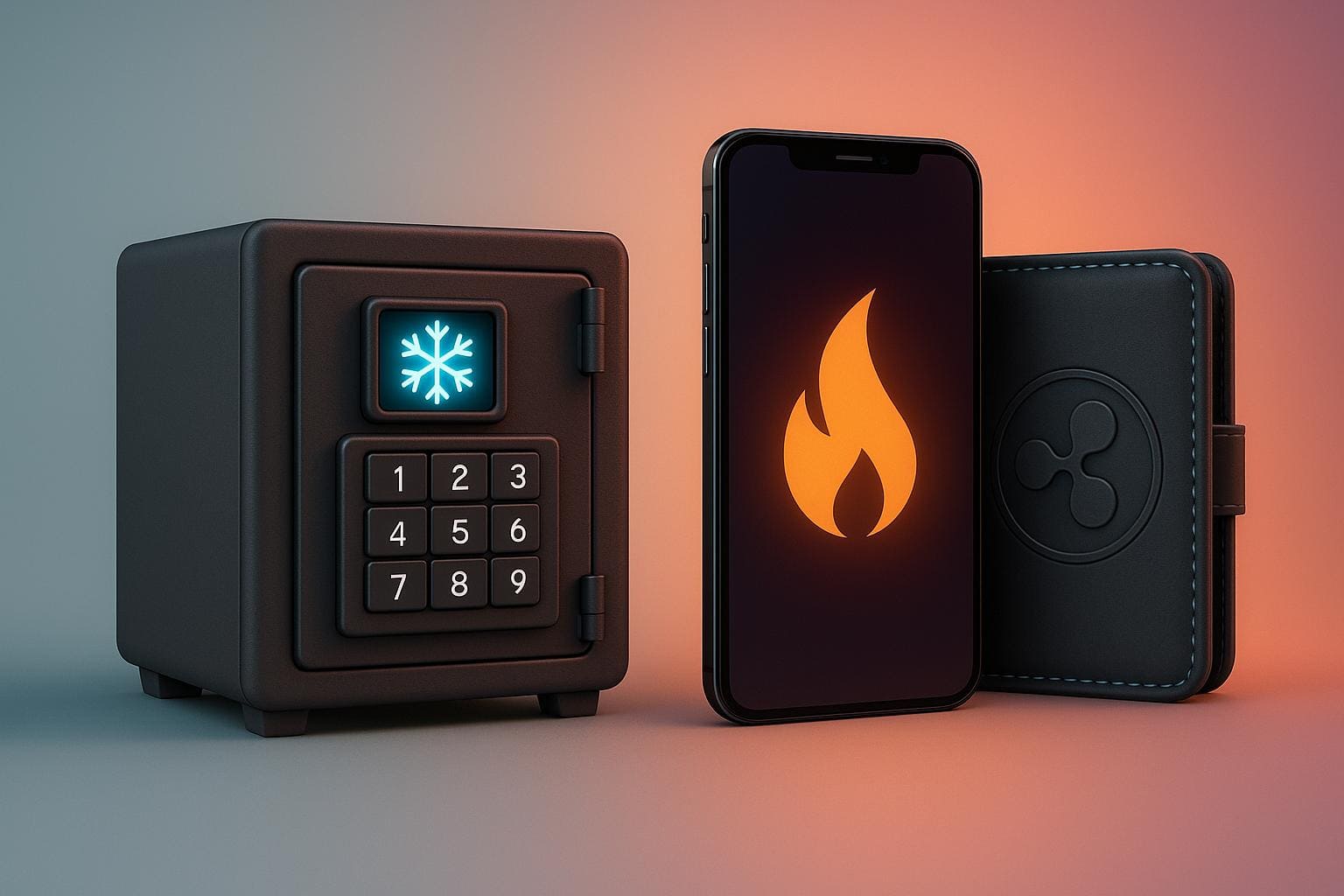Trading may be art, but storing cryptocurrency is pure security science. Exchange hacks, phishing kits, SIM‑swaps and key‑loggers can wipe gains faster than you can finish a fiat‑to‑crypto exchange. The last line of defence is your wallet, which can be a “hot” online app or a fully offline “cold” device. Below you’ll learn how to choose, harden and combine both types, and why even the best crypto exchanger or top crypto exchangers can’t help if your private keys are exposed. We’ll also remind you where to buy Bitcoin profitably, how to hunt a low exchange fee, and how to choose an exchanger among dozens of reliable crypto exchangers and specialised USDT exchangers.
1. Why you need your own wallet
Exchanges are convenient: one minute on a top crypto exchanger and you are trading. Yet “not your keys — not your coins”. Service downtime, regulation or a hack can lock funds permanently, so long‑term reserves belong in personal storage. Leave only day‑trading capital on an exchange with a low exchange fee.
2. Hot wallets: speed and flexibility
2.1 Types
- Mobile apps (Trust Wallet, Exodus Mobile)
- Desktop clients (Electrum, Atomic Wallet)
- Browser extensions (MetaMask, Rabby)
2.2 Advantages
- Fast access — sign in, send USDT to USDT exchangers, trade.
- DeFi native — connect MetaMask to Uniswap in two clicks.
- Multi‑asset support for thousands of coins.
2.3 Risks & defence
• Phishing pages steal seed phrases. • Malware swaps clipboard addresses. • SIM‑swap bypasses SMS 2FA.
Defence: use password + TOTP 2FA, store seed offline, never click unknown links, and always double‑check a low exchange fee isn’t a zero‑fee scam.
3. Cold wallets: maximum protection
3.1 Formats
- Hardware devices (Ledger Nano X, Trezor Model T, BitBox02)
- Paper wallet (printed QR with keys — generated offline)
- Metal seed plate (titanium engraving)
3.2 Why cold is safer
Secure Elements never expose the key to the Internet; the transaction is signed inside the chip. Top funds run a cold vault and first send a test transfer through reliable crypto exchangers before moving large sums.
4. Choosing a storage strategy
Day trader — hot mobile or browser wallet + minimal exchange float. When considering how to choose an exchanger, look for the low exchange fee P2P option.
Long‑term investor — 90 % funds on hardware, 10 % hot for DeFi. Buy coins via the best crypto exchanger then sweep to cold storage.
NFT collector — separate hardware for ERC‑721; trade via a limited‑balance hot wallet.
5. Wallet Security Checklist
- Generate seed offline — laptop in airplane mode.
- Record seed on metal — paper burns.
- Enable TOTP 2FA, avoid SMS.
- Add PIN + pass‑phrase to Ledger / Trezor.
- Split funds: ≤ 10 % hot, ≥ 90 % cold.
- Send a $5 test via USDT exchangers before a big transfer.
- Update firmware, audit browser extensions.
6. Where to buy a hardware wallet
Only official sites or authorised resellers. Pay with BTC or USDT via a top crypto exchanger offering direct checkout and a low exchange fee. Unsure how to choose an exchanger? Compare liquidity, fiat ramps and user reviews.
7. FAQ
- Can I keep everything on an exchange? Possible but risky — not recommended for long‑term storage.
- Which cold wallet is best? Ledger Nano X (Bluetooth) or Trezor Model T (open‑source display).
- What if I lose the seed? Funds are gone. Create two metal copies and store in separate safes.
- Can Ledger sign DeFi transactions? Yes — through MetaMask hardware interface.
- Why are top crypto exchangers still needed? They provide cheap on/off‑ramps with low exchange fee.
- How much to keep hot? Maximum 10 % of portfolio.
- Is multisig worth it? For balances > $50 k, yes.
- Are paper wallets OK? Fine as a “time‑capsule” but fragile.
- How to choose an exchanger for daily use? Look at liquidity, fees and local payment support.
- Do hardware wallets support NFT? Yes — Ledger Live and Trezor Suite now display ERC‑721.
- Where to buy Bitcoin profitably? See our live list of top crypto exchangers.
- What is a USDT exchanger? A service that swaps USDT to fiat or other coins with a low fee.
Conclusion
No keys, no coins. Hot wallets excel at daily moves; cold wallets excel at long‑term vaulting. Even the best crypto exchanger and the top crypto exchangers won’t save exposed keys. Follow the checklist, keep seeds offline, test small transfers and rely on reliable crypto exchangers with a low exchange fee. Start reinforcing your storage model today!





















